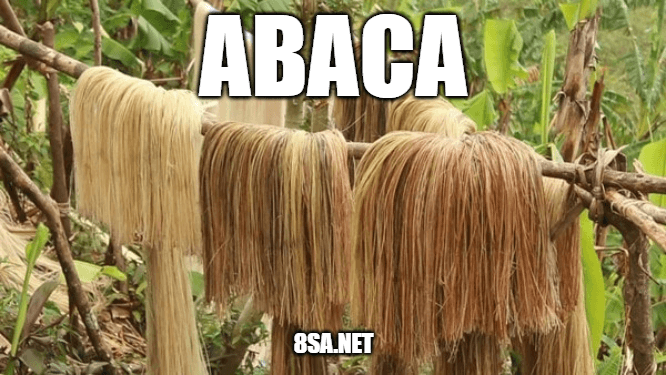What is abaca? What kind of plant is an abaca? In which regions does it grow? What is it used for? What are the usage areas? How strong are materials made from abaca?

Abaca is a tropical plant that is a member of the banana family. It is native to the Philippines and is also known as Manila hemp, or simply abacá. The plant’s long, sturdy fibers, which can be obtained from the trunk of the plant, are used to make a variety of products, including rope, twine, paper, and textiles.
The fibers of the abaca plant are strong and durable, making them useful for a variety of applications. They are often used to make rope and twine for use in shipping and fishing, as well as for other industrial purposes. The fibers are also used to make a type of paper known as “abaca paper,” which is prized for its strength, durability, and resistance to tearing. The fibers can also be used to make textiles such as matting and burlap.
Abaca is a tropical plant, so it grows best in warm, humid climates. The plant is grown on large plantations in the Philippines, where it is the country’s major cash crop. It’s fibers are also cultivated in other tropical countries such as Ecuador and Costa Rica, but the Philippines is the main producing country.
The fibers from the abaca plant are environmentally friendly, as the plant is renewable and can be harvested without harming the environment. Because of this and its strength, it’s becoming increasingly popular in eco-friendly products such as cloth bags, and natural cording, as well as products for construction and industry.
What is abaca used for?
Abaca is used for a variety of purposes due to its strong, durable fibers. Some common uses include:
- Rope and twine: The fibers from the abaca plant are strong and flexible, making them ideal for use in making rope and twine for shipping, fishing, and other industrial purposes.
- Paper: Abaca fibers can be used to make a type of paper known as “abaca paper,” which is prized for its strength, durability, and resistance to tearing. This paper can be used for various applications, such as bookbinding, wallpaper, and currency.
- Textiles: Abaca fibers can be used to make a variety of textiles, including matting and burlap, which are used in construction, agriculture, and other industrial applications.
- Geotextile: Abaca fibers are also used to make geotextile which are used in geotechnical applications such as erosion control, soil reinforcement and subgrade stabilization.
- Biocomposites: Abaca fibers are used to make biocomposites such as natural fiber-reinforced plastics which are used in automotive and consumer product manufacturing.
- Eco-friendly products: Abaca fibers are environmentally friendly, as the plant is renewable and can be harvested without harming the environment. Because of this and its strength, it’s becoming increasingly popular in eco-friendly products such as cloth bags, and natural cording.
- Art and craft: Handwoven products from abaca fibers like mats, baskets, bags, and more can also be used for decorative and functional objects for artistic and craft use.
- Food and Pharmaceutical products: Abaca leaves can be used to wrap food, and can be dried, crushed and used as an herbal medicine.
Abaca is a versatile plant with many different uses, and new uses for its fibers continue to be developed.
How strong is abaca?
Abaca fibers are known for their strength and durability. The strength of abaca fibers is comparable to that of sisal and hemp, which are also known for their strength and durability. The strength of abaca fibers can be attributed to their cellular structure, which is characterized by long, thin cells with thick walls. This structure gives the fibers a high degree of stiffness and strength.
The tensile strength of abaca fibers is similar to other natural fibers such as flax, hemp, and jute. Tensile strength refers to the amount of stress a material can withstand before breaking or becoming deformed. For Abaca fibers, it is reported to have an average tensile strength of 400-450 MPa (Mega Pascal) which is about 59,000-65,500 psi (pounds per square inch).
The fibers are also considered to have a high Modulus of Elasticity, or E-Modulus which means that it has a high resistance to deformation.
Additionally, abaca fibers are also known for their resistance to abrasion and moisture, which adds to its durability and strength.
In summary, Abaca fibers are considered to be strong and durable natural fibers, making it suitable for applications that require high strength and resistance to wear and tear.